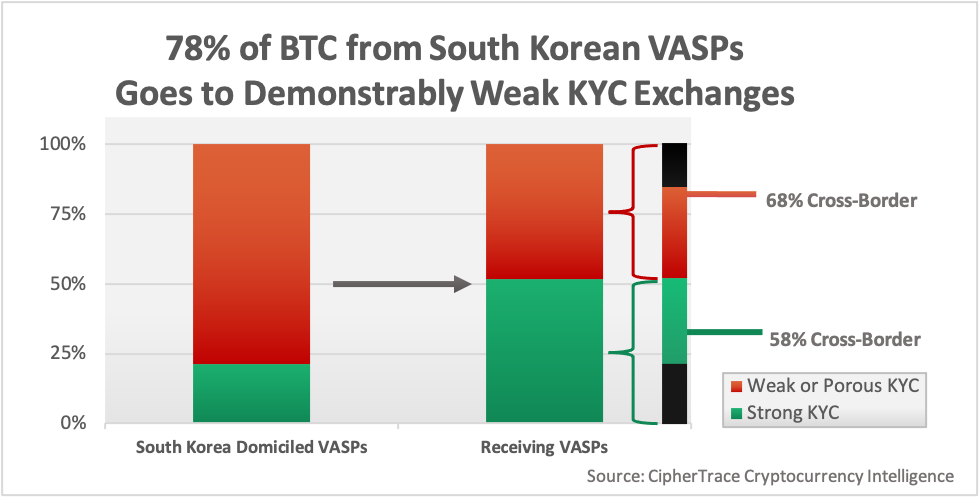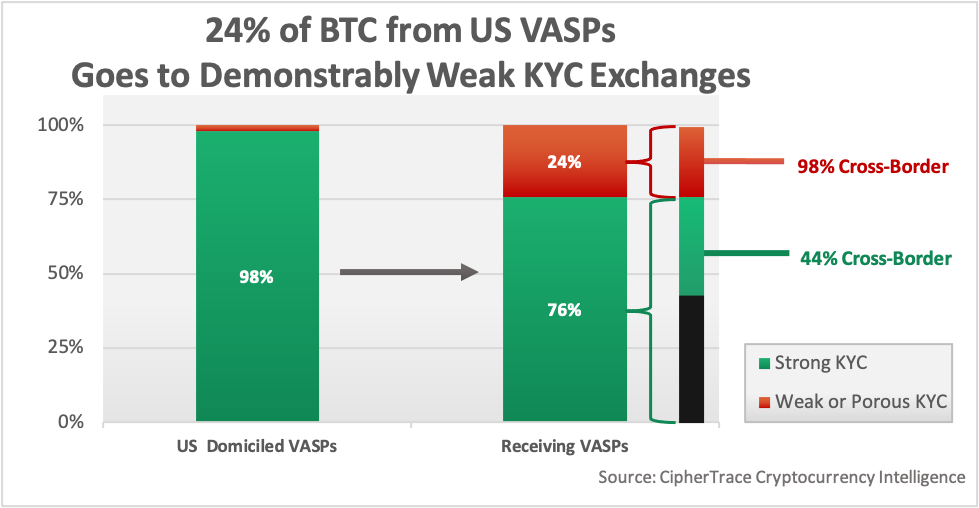This is the biggest hurdle Bitcoin faces when it comes to cross-border txns

Bitcoin has grown by leaps and bounds over the past year. However, as is often the case, growth and attempts to regulate often go hand-in-hand, with the past year also seeing increasing efforts at regulating the crypto-market in a bid to curb bad actors and crimes like money laundering.
Towards the end of 2020, the Financial Crimes Enforcement Network (FinCEN) and the Federal Reserve Board proposed a rule change that required financial and banking institutions to store and collect information on international payments. While such a mandate already existed, the change now required any transaction above $250 to adhere to the same requirements. While this was intended to ensure greater scrutiny of cross-border payments, it also posed a great logistical challenge for virtual asset service providers (VASP).
At this lower threshold, cross-border transactions make up 83% of all travel rule triggers for U.S VASPs, and the difficulty in determining “cross-border payments” in the virtual asset world has only added to the challenges faced. According to a recently published report by CipherTrace titled “Cryptocurrency Crime and Anti-Money Laundering Report,” despite changes to regulations, there has been a substantial hike in weak KYC procedures. It read,
“In 2020, cross-border bitcoin transactions constituted 84% of all VASP outflow volume globally. Over one-third—36%—of this cross-border BTC volume went to VASPs with weak or porous KYC procedures.”
Source: CipherTrace
The report went on to add that only 44% of the outgoing exchange-to-exchange volume to exchanges with strong KYC was cross-border and that inversely with regard to inflows of U.S VASPs,
“74% of their inbound exchange-to-exchange BTC volume was cross-border. Of this cross-border volume, 50% originated from crypto-exchanges with weak or porous KYC practices.”

Source: CipherTrace
CipherTrace’s findings also shed light on the global scenario, as it highlighted that when it comes to places like South Korea. The outflows of South Korean-domiciled VASPS suggested that 63% of the exchange-to-exchange BTC volume was cross-border, with 53% of the total cross-border volume being sent to VASPs with demonstrably weak KYC procedures. When compared to other regions such as Russia, Singapore, and Seychelles, South Korea noted the highest percent of BTC entering exchanges with weak KYC protocols in place.
In the said report, CipherTrace also went on to highlight the strong implementation of KYC procedures in the U.S, adding that as a prominent market for crypto, the country seems to be quite advanced when it comes to mitigating risk. Its findings with regard to the inflows and outflows of VASPs by jurisdiction revealed that 98% of the outgoing BTC volume from U.S VASPs is from exchanges with strong KYC procedures.
This can have a trickle-down effect on other economies, especially those seeing strong interest in crypto. In fact, these findings might trigger a more deliberate implementation of such measures that can eventually make even the slightest threat from bad actors in crypto largely non-existent.







